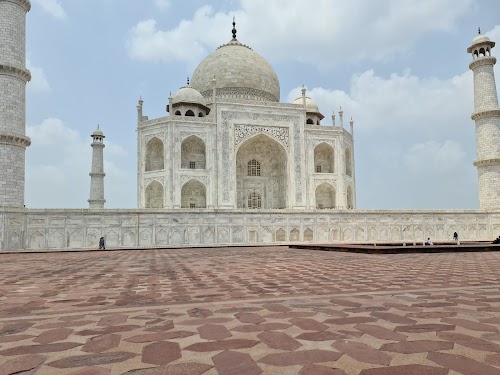
Taj Mahal
Agra, India
- Admire the intricate marble inlay work
- Explore the surrounding gardens and mosque
- Learn about Mughal history and architecture
- Take stunning photographs of the Taj Mahal
- Witness the sunrise or sunset over the monument
Known for:
Description:
The Taj Mahal is an ivory-white marble mausoleum on the south bank of the Yamuna river in Agra, India. It was commissioned in 1632 by the Mughal emperor Shah Jahan to house the tomb of his favorite wife, Mumtaz Mahal. The Taj Mahal is widely recognized as one of the world's most beautiful buildings and a symbol of eternal love. It is a UNESCO World Heritage Site and one of the New7Wonders of the World. The complex includes the main mausoleum, a mosque, a guest house, and extensive gardens. The intricate marble inlay work, calligraphy, and pietra dura decorations are breathtaking. Visitors are captivated by the symmetrical design and the serene atmosphere.
History:
The Taj Mahal was commissioned in 1632 by the Mughal emperor Shah Jahan to house the tomb of his favorite wife, Mumtaz Mahal, who died giving birth to their 14th child. Construction took over 20 years, involving thousands of artisans and laborers. The main structure was completed around 1643, while the surrounding buildings and gardens took another ten years. Legend has it that Shah Jahan intended to build a black Taj Mahal across the river for himself, but this was never realized. He was later imprisoned by his son Aurangzeb in Agra Fort, where he could gaze upon his beloved's tomb until his death.